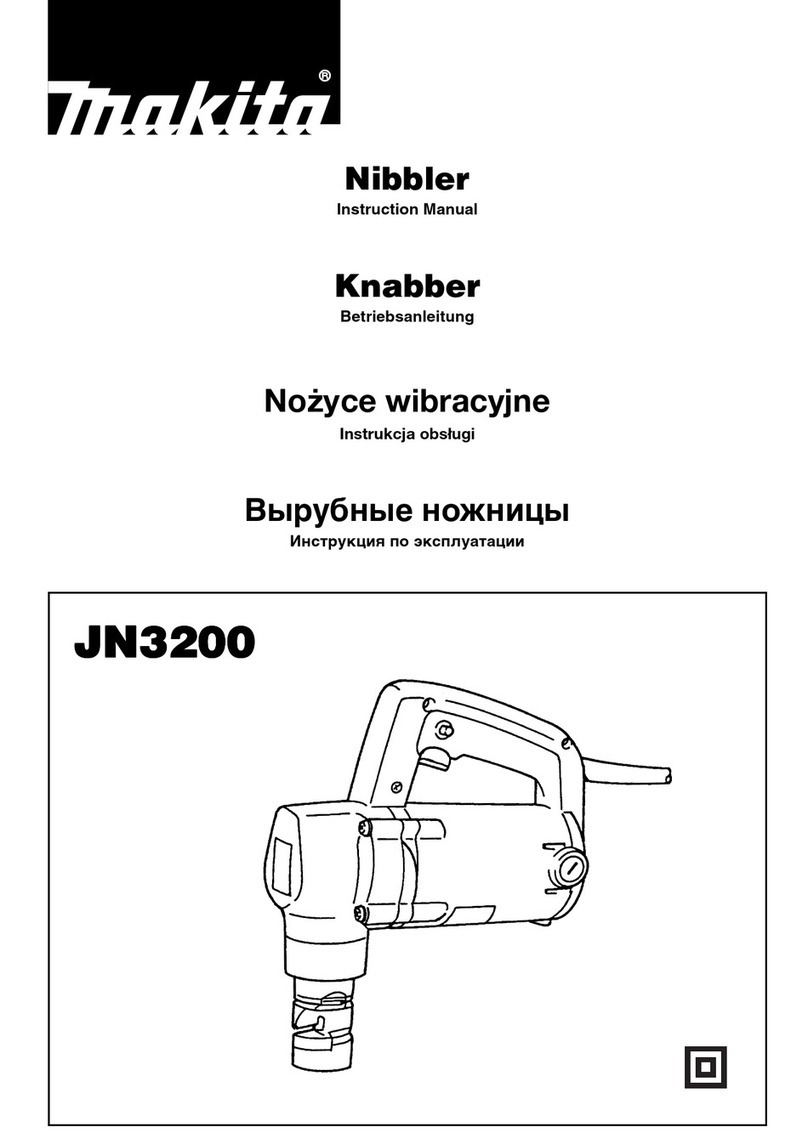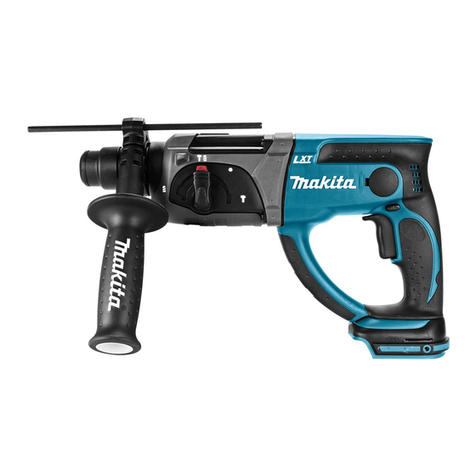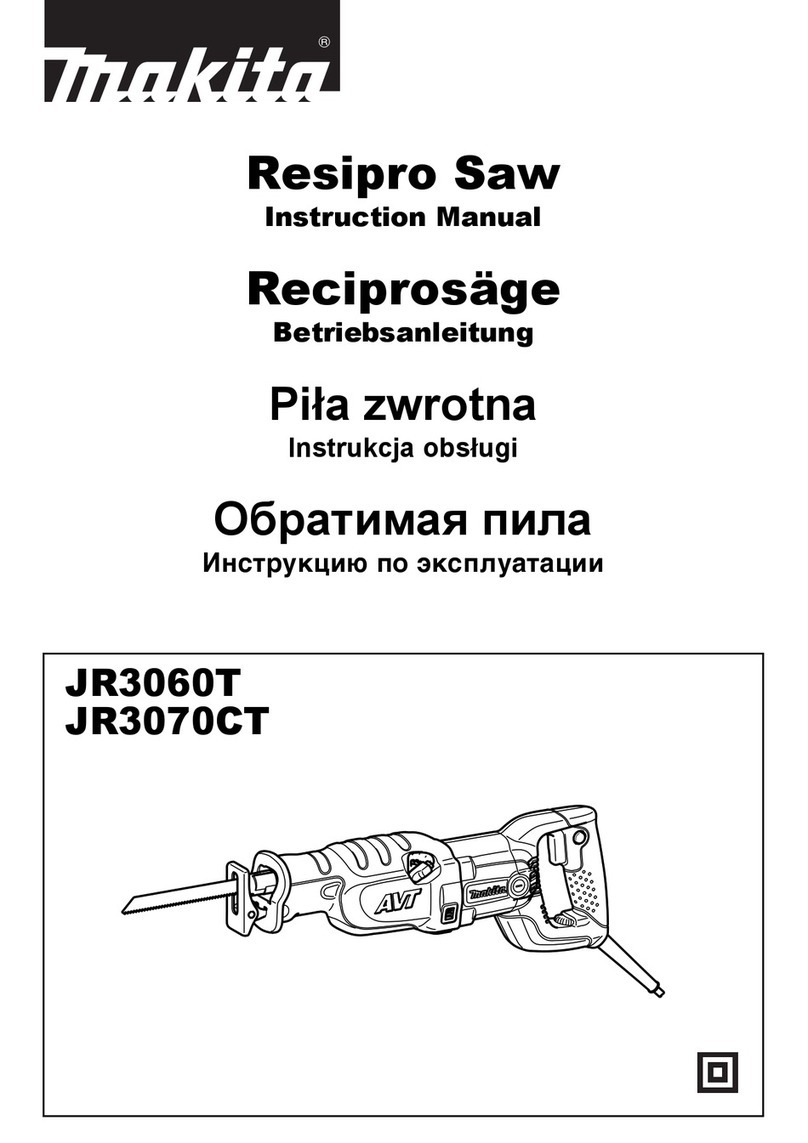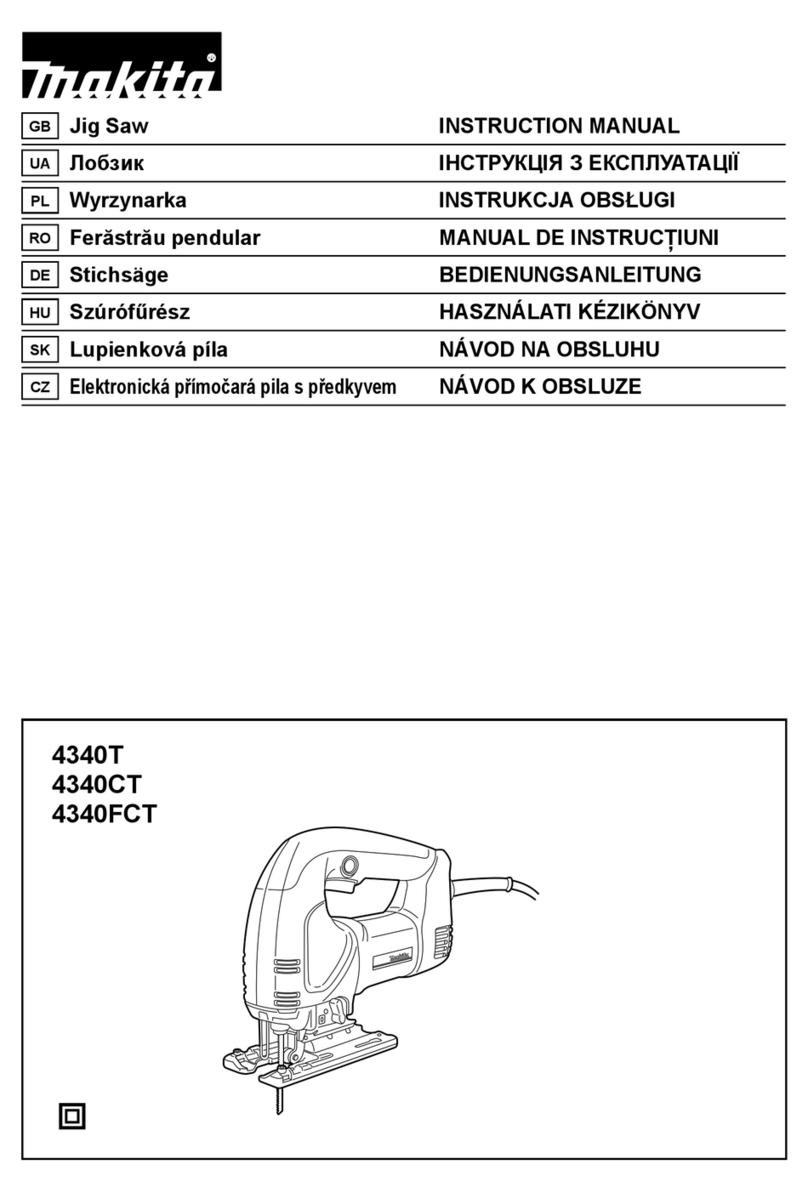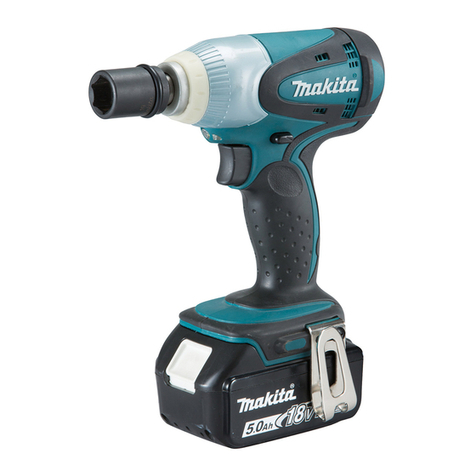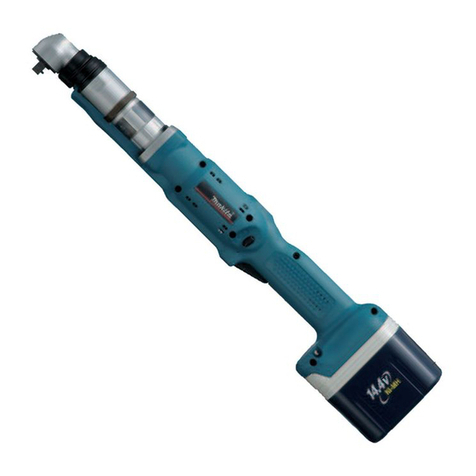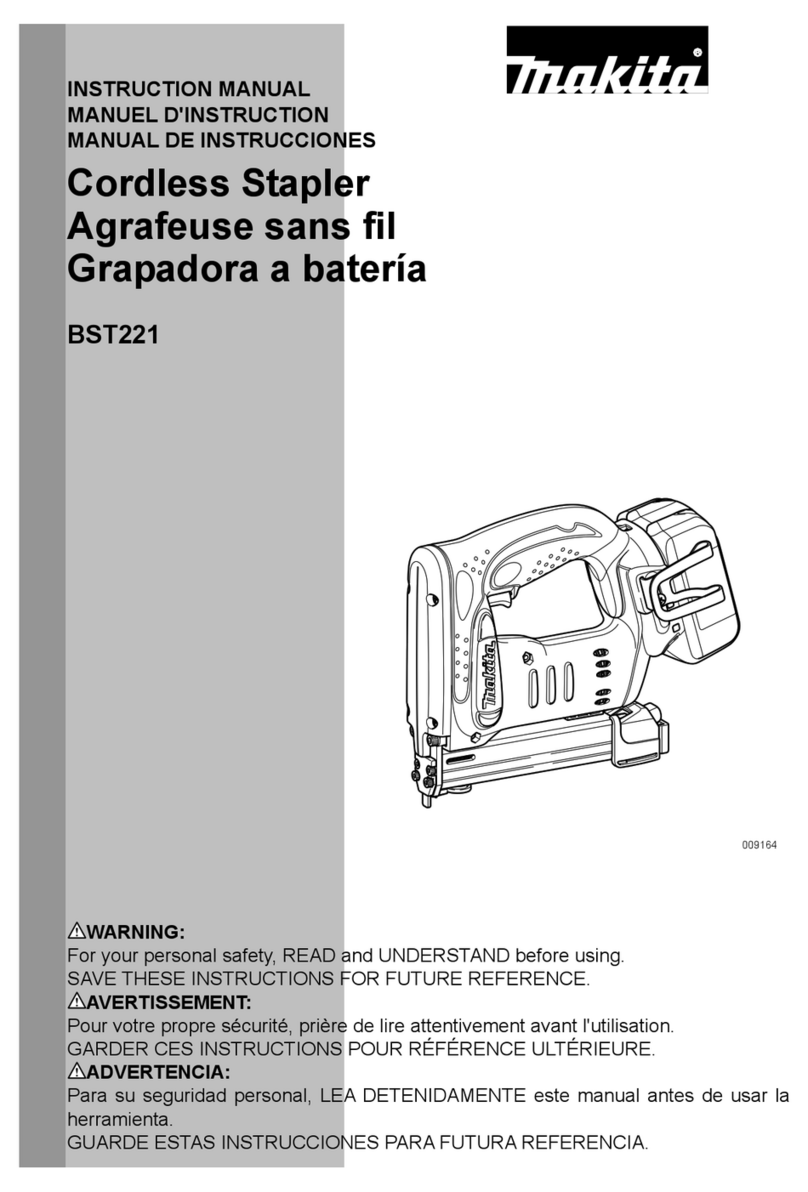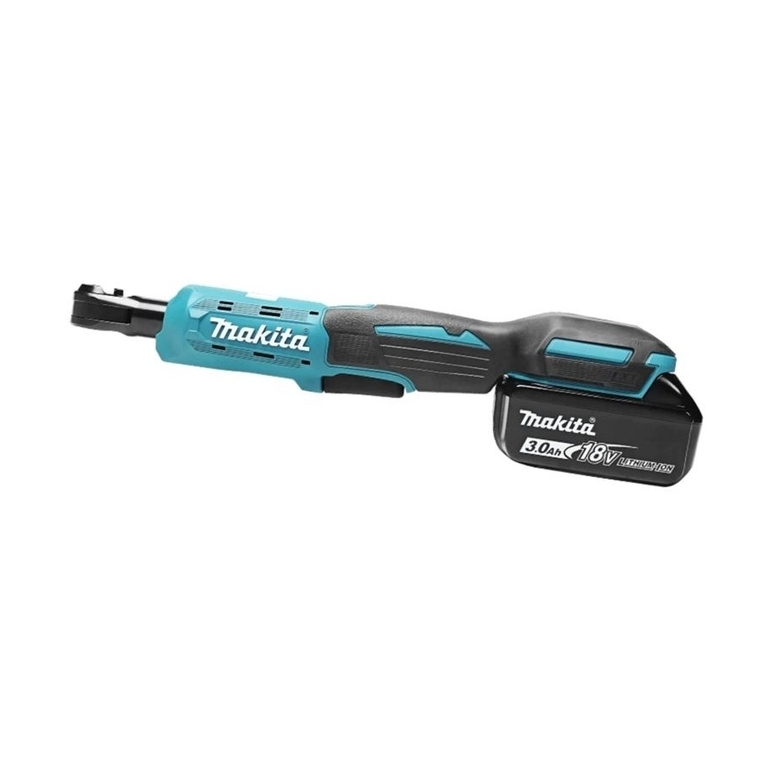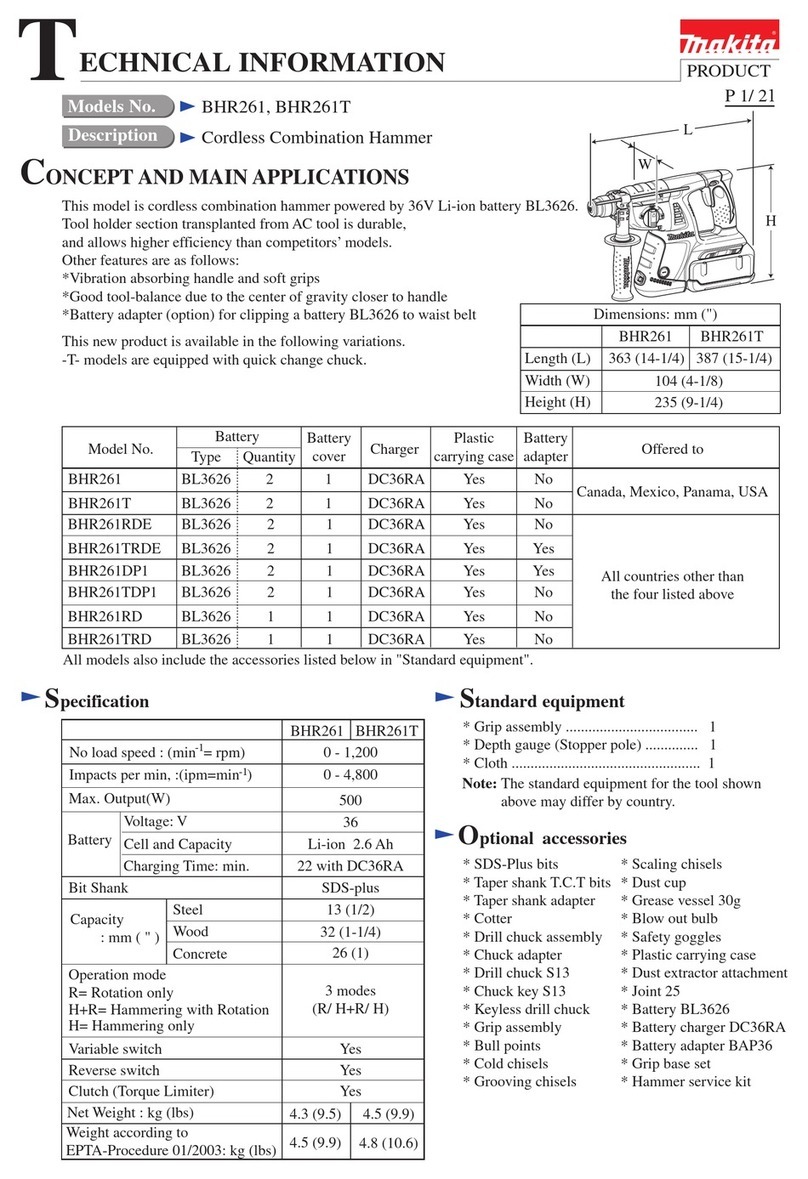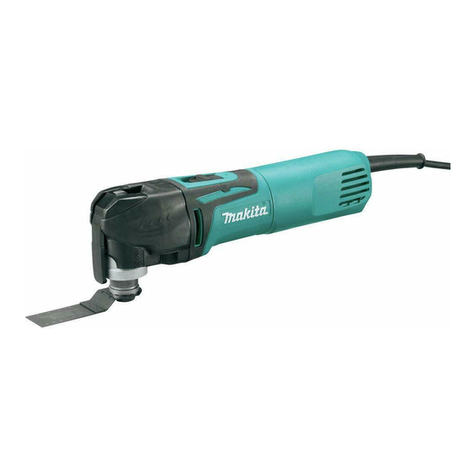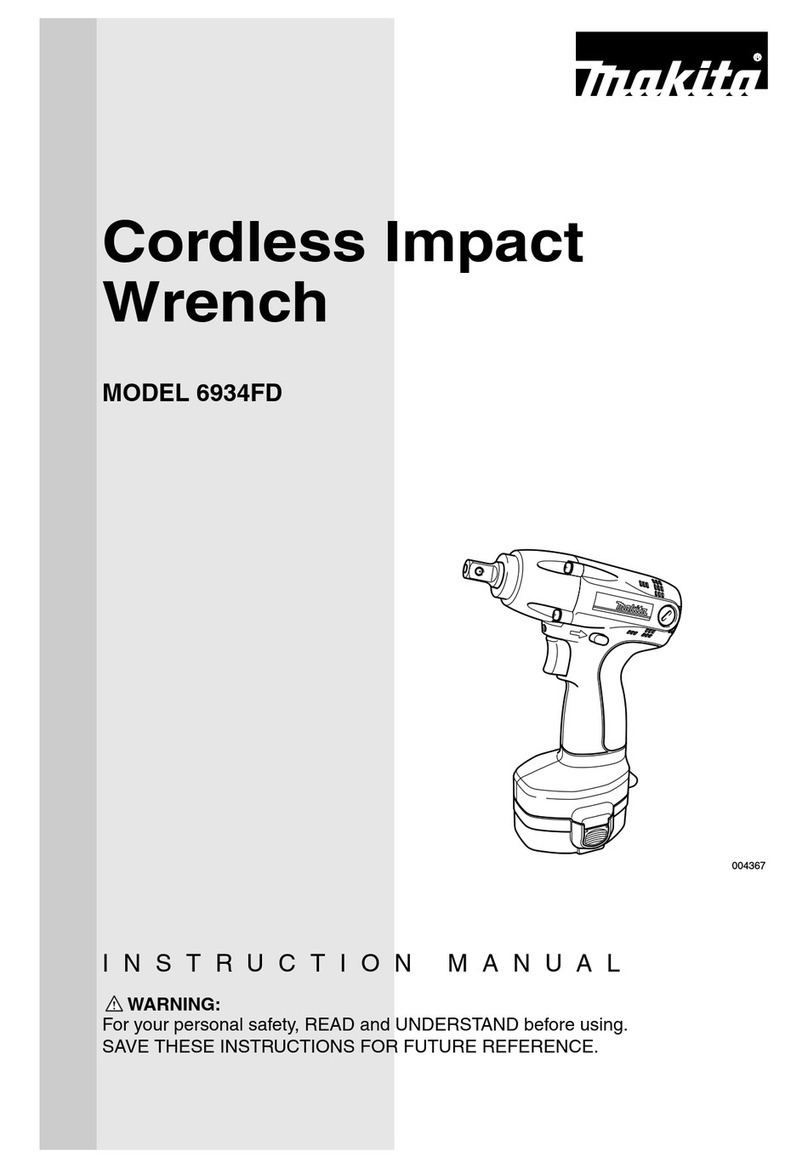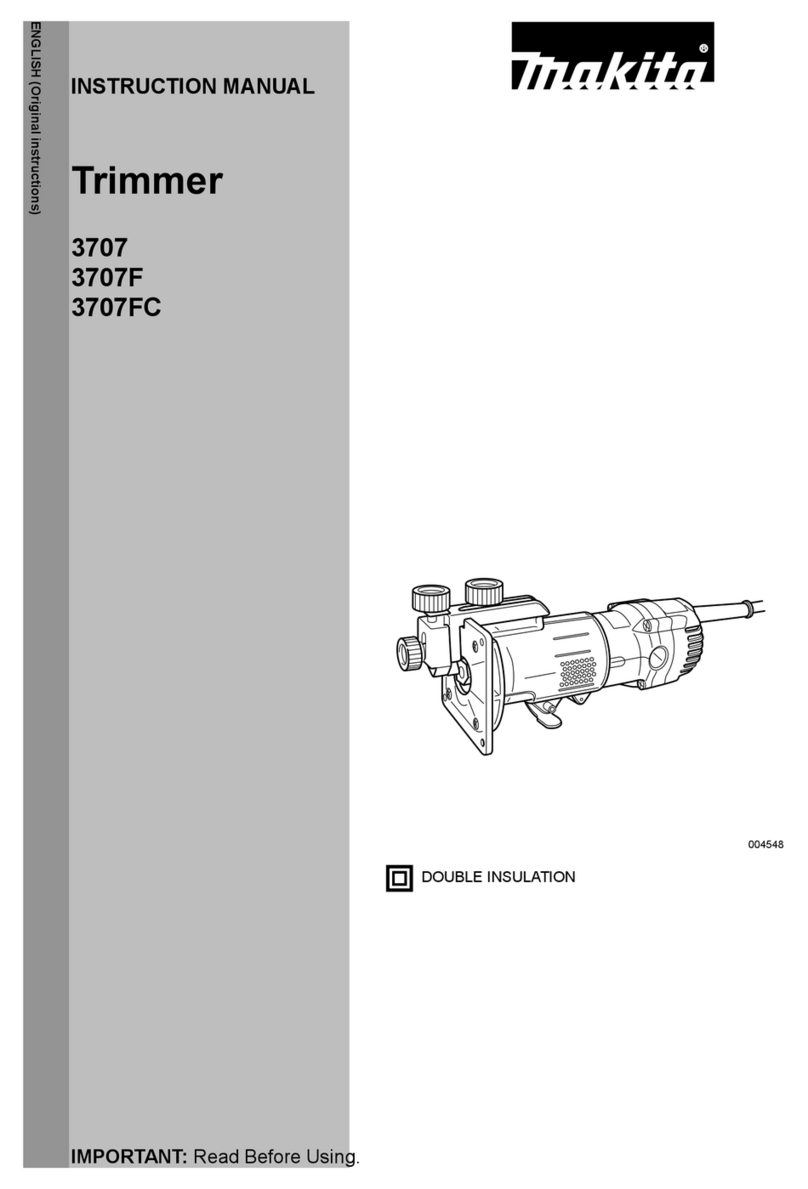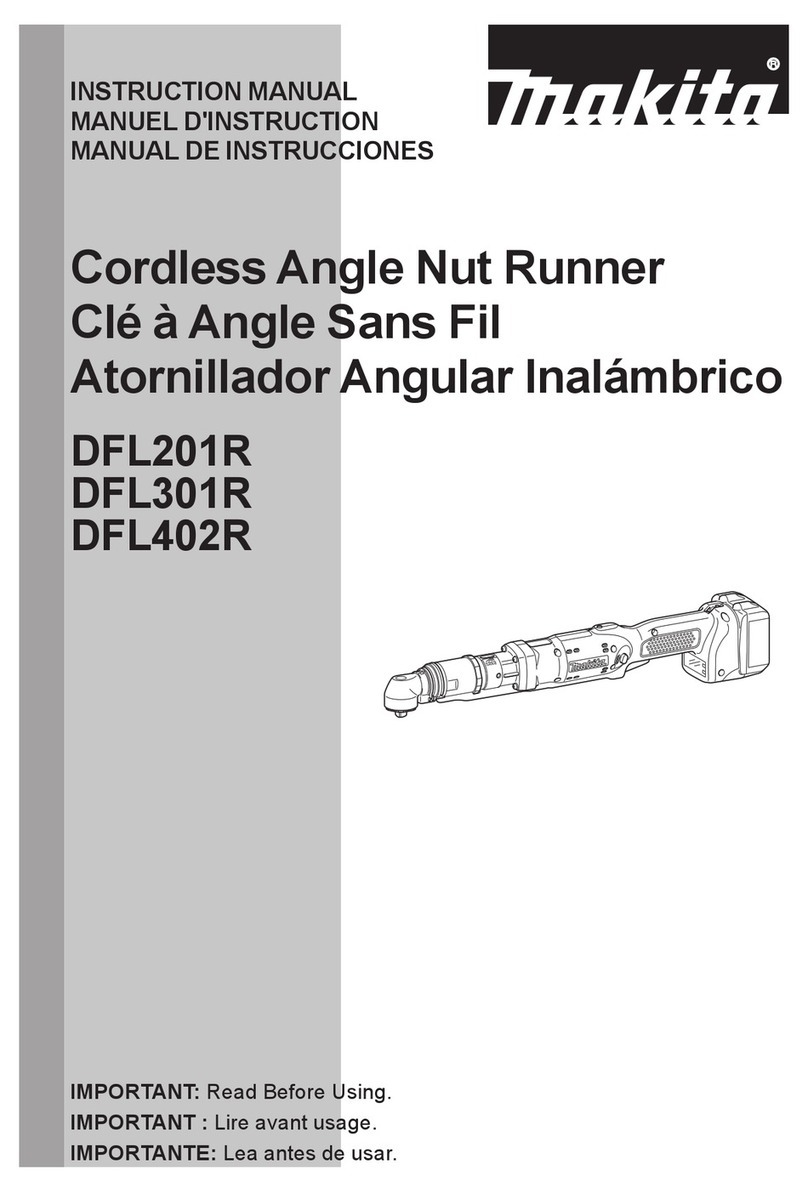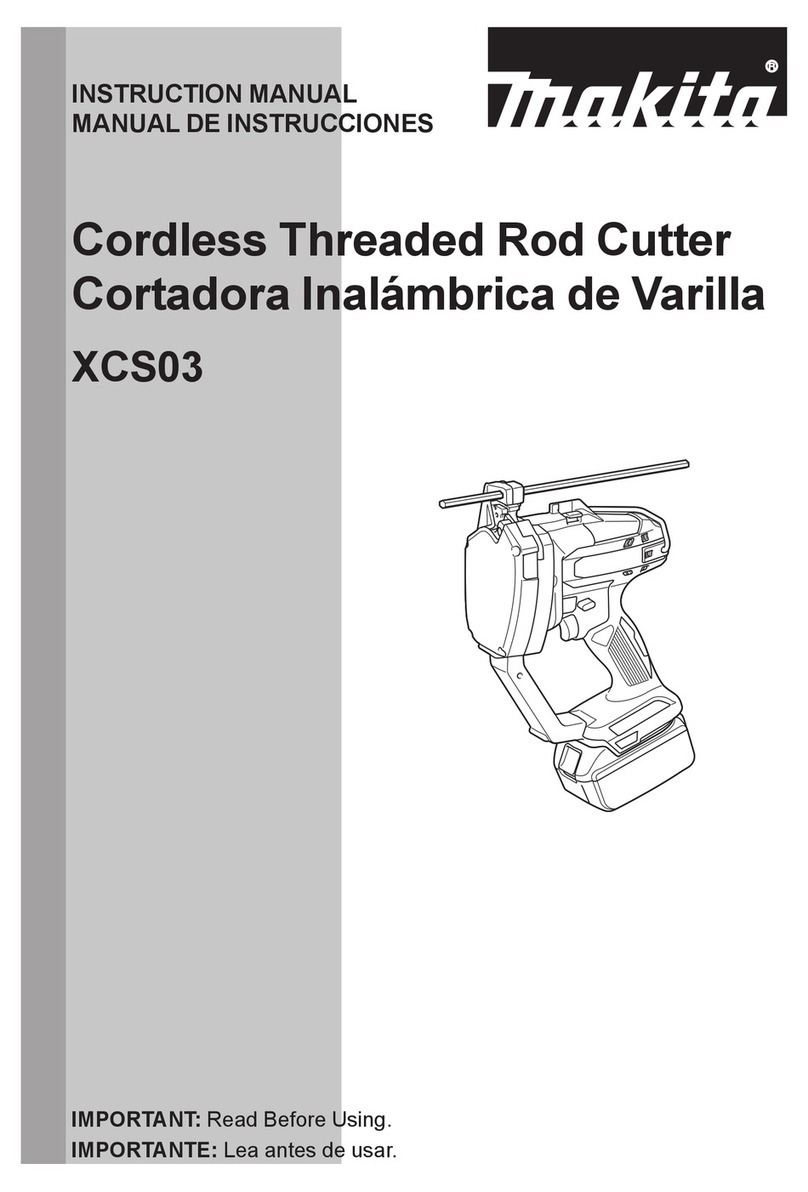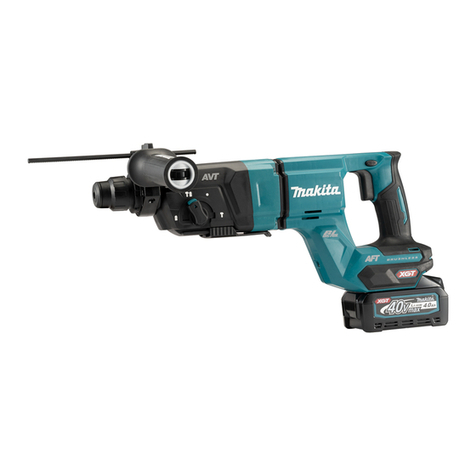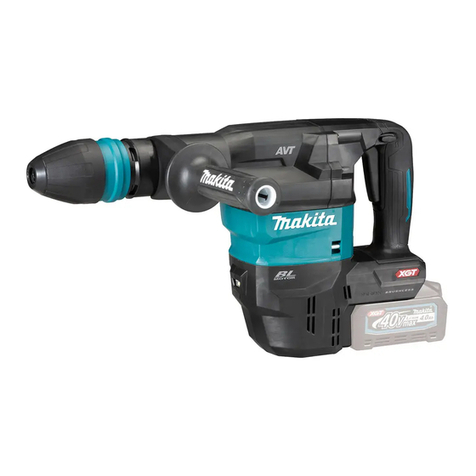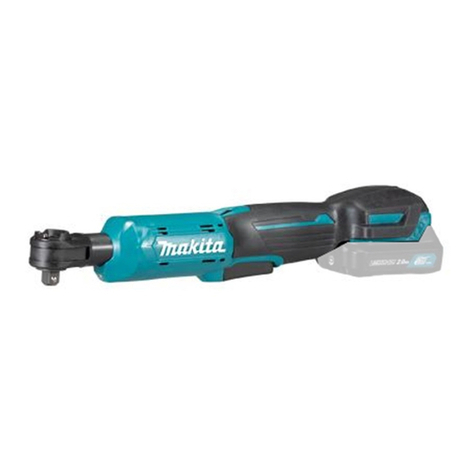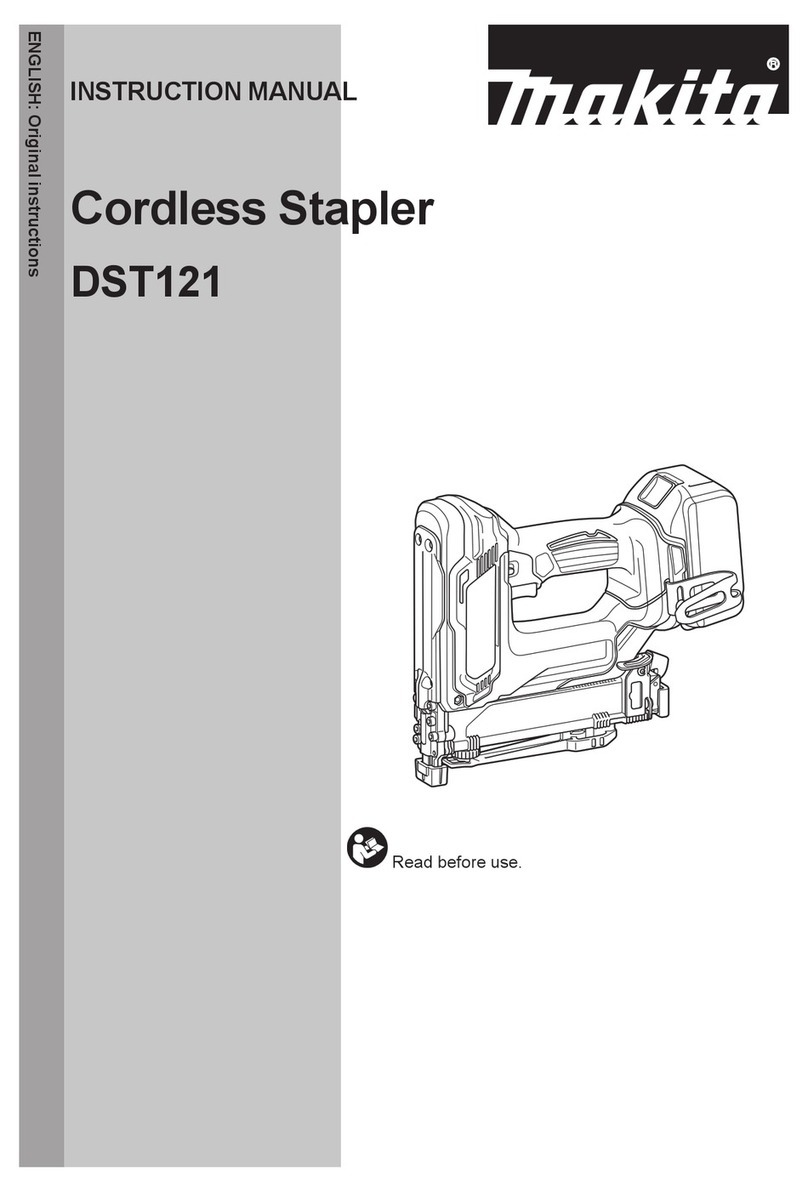
5
FUNCTIONAL DESCRIPTION
CAUTION:
• Always be sure that the tool is switched off and the
battery cartridge is removed before adjusting or
checking function on the tool.
Installing or removing battery cartridge
Fig.1
CAUTION:
• Always switch off the tool before installing or
removing of the battery cartridge.
•
Hold the tool and the battery cartridge firmly when
installing or removing battery cartridge.
Failure to
hold the tool and the battery cartridge firmly may cause
them to slip off your hands and result in damage to the
tool and battery cartridge and a personal injury.
To remove the battery cartridge, slide it from the tool
while sliding the button on the front of the cartridge.
To install the battery cartridge, align the tongue on the
battery cartridge with the groove in the housing and slip
it into place. Insert it all the way until it locks in place
with a little click. If you can see the red indicator on the
upper side of the button, it is not locked completely.
CAUTION:
• Always install the battery cartridge fully until the
red indicator cannot be seen. If not, it may
accidentally fall out of the tool, causing injury to
you or someone around you.
• Do not install the battery cartridge forcibly. If the
cartridge does not slide in easily, it is not being
inserted correctly.
Battery protection system
(Lithium-ion battery with star marking)
Fig.2
Lithium-ion batteries with a star marking are equipped
with a protection system. This system automatically cuts
off power to the tool to extend battery life.
The tool will automatically stop during operation if the
tool and/or battery are placed under one of the following
conditions:
• Overloaded:
The tool is operated in a manner that causes
it to draw an abnormally high current.
In this situation, release the trigger switch on
the tool and stop the application that caused
the tool to become overloaded. Then pull the
trigger switch again to restart.
If the tool does not start, the battery is
overheated. In this situation, let the battery
cool before pulling the trigger switch again.
• Low battery voltage:
The remaining battery capacity is too low
and the tool will not operate. In this situation,
remove and recharge the battery.
Indicating the remaining battery
capacity
Fig.3
When you pull the switch trigger, the LED display shows
the remaining battery capacity.
The remaining battery capacity is shown as the
following table.
LED indicator status Remaining battery capacity
About 50% or more
About 20% - 50%
About less than 20%
012273
NOTE:
• When the LED display goes off, the tool is turned
off to save the battery power. To check the
remaining battery capacity, slightly pull the switch
trigger.
• The LED display goes off approximately one
minute after releasing the switch trigger.
• When the tool is overheated, the light flashes for
one minute, and then the LED display goes off. In
this case, cool down the tool before operating
again.
• When the LED display lights up and the tool stops
even with a recharged battery cartridge, cool down
the tool fully. If the status will not change, stop
using and have the tool repaired by a Makita local
service center.
Switch action
Fig.4
CAUTION:
• Before installing the battery cartridge into the tool,
always check to see that the switch trigger
actuates properly and returns to the "OFF"
position when released.
To start the tool, simply pull the switch trigger. Tool
speed is increased by increasing pressure on the switch
trigger. Release the switch trigger to stop.
Lighting up the front lamp
CAUTION:
• Do not look in the light or see the source of light
directly.
Fig.5
